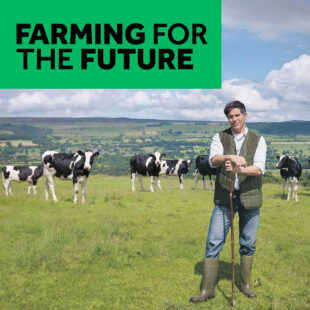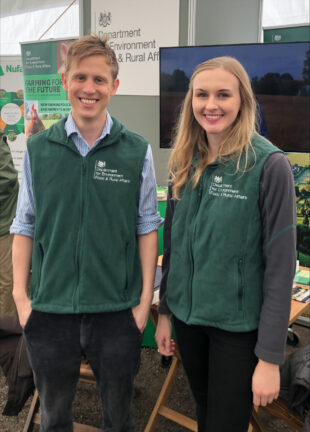https://defrafarming.blog.gov.uk/hedgerows-standardhedgerows-standard-of-the-sustainable-farming-incentive-pilot/
Hedgerows standard of the Sustainable Farming Incentive pilot
The guidance on this page is for SFI pilot participants only. Please visit GOV.UK for the official Sustainable Farming Incentive scheme guidance.
Find out about the standard for hedgerows, who’s eligible and how much you can get paid.
Applications for the pilot have now closed. The Sustainable Farming Incentive 2023 offer is due to launch from summer 2023. To find out more about the SFI 2023 offer, read the SFI Handbook for the SFI 2023 offer.
This standard is for farmers piloting the Sustainable Farming Incentive scheme.
How the standard works
There are 3 levels to the hedgerows standard. Each level has a set of actions you must complete, where relevant, to get paid.
The levels build on one another - each one includes the actions from the previous levels.
If you’re already doing activities on your land that fulfil the actions in this standard, you can use these areas instead of creating new ones. This means you can maintain existing areas to complete actions that require you to ‘create’ or ‘establish’ something.
Anything you’re doing to complete an action only counts towards that action. It will not count towards the standard’s other actions, unless this guidance says otherwise.
When to complete actions
Because agreements will start from November 2021 at the earliest, it will be too late to complete some actions that must take place after harvest - for example, establishing a green cover by the end of September or mid-October.
Complete these actions within 12 months of your agreement start date. This means you can complete the post-harvest actions after harvest 2022.
Actions that need you to create a new habitat may not be practical during the winter months - for example, sowing a winter bird food mix. You should complete these actions within 12 months of your agreement start date.
If you're amending your agreement to add this standard, or to change the ambition level of this standard in an existing agreement, you'll need to complete all of the actions listed below within 12 months from when the amendment starts. For example, if you're adding this standard to an agreement with a 1 November 2021 start date for the second year of that agreement, the amendment would be effective from 1 November 2022 and the actions for this standard would need to be completed by 31 October 2023.
How much you’ll be paid
In January 2024, we reviewed the payment rates for the Sustainable Farming Incentive pilot standards following our previous review in 2023.
Payment rates for the introductory, intermediate and advanced levels of the hedgerows standard were increased. The increase will apply from the start of your agreement
For your agreement to show the revised payment rates, you need to sign into the Rural Payments service to ‘Generate’ and ‘Download’ an updated version of your agreement. Doing this will update your agreement document.
The levels and payments for this standard are set out in the table. These payment rates are annual.
| Level | Payment per 100 metres | Previous payment rate |
|---|---|---|
| Introductory | £26 | £20 |
| Intermediate | £34 | £27 |
| Advanced | £37 | £30 |
You can also apply for funding for capital items.
Hedgerow cutting limits
The hedgerows standard sets a limit to the amount of cutting you’re allowed to do at each level. You can cut hedges less than the limit specified or not cut them at all.
Exemptions to the cutting limits apply to hedgerows that are:
- cut for safety reasons or to maintain rights of way access
- newly planted, until fully established
- in agreements less than 50 hectares - in this case you do not have to leave 50% (introductory level) or two-thirds (intermediate/advanced level) uncut every year, but can cut the hedges on a 2 year rotation for introductory level, or a 3 year rotation for intermediate/advanced level, or less frequently)
Eligible hedgerows
Hedgerows must be:
- a boundary line of shrubs (a woody plant where the distance between the ground and the base of the leafy layer is less than 2 metres)
- over 20 metres long, and less than 5 metres wide between major stems at the base
- composed of at least 80% native shrubs
Enter half of the total length of the hedge in the agreement if you only have control over one side of it, for example a roadside hedge or a hedge bordering a neighbour’s land. However, you can enter the whole length if you have a legal right or obligation to maintain the hedge and can fulfil the actions under the standard.
Hedgerows can be:
- newly planted
- grown on top of earth or stone banks
Sites of special scientific interest (SSSIs)
If your application includes SSSI land, you will need consent from Natural England.
Make your request for consent when you get your agreement offer. Send a copy of the offer along with a notice form to:
ProtectedSites@naturalengland.org.uk
Your agreement cannot start without SSSI consent.
For more information read the guidance Sites of special scientific interest: managing your land
Introductory level: actions
There are 2 actions at this level.
1. Leave at least 50% of the hedgerow uncut
Every year on rotation leave at least half of the total hedgerow length uncut to increase the amount of pollen, nectar and berries for birds and insects.
Information on leaving hedgerows uncut
How you complete this action is up to you, but you can read information on how to plant and manage hedgerows.
2. Maintain hedgerow trees, or plant or tag new ones
This action will provide habitat for wildlife.
There must be an average of one hedgerow tree per 400 metres across all the hedgerows. The trees do not have to be evenly distributed across the hedgerows. Maintain existing trees and if necessary plant new ones to achieve this.
When counting how many trees are in a given length, you can include dead and dying trees (this does not include newly planted trees that die before they become established). Dead trees reduce soil erosion and provide shelter for wildlife.
Some hedgerows may have no trees, especially around fields used by ground nesting birds.
Information on planting and maintaining hedgerow trees
How you complete this action is up to you, but you can read information on how to:
- establish trees along field boundaries
- maintain trees along field boundaries
- maintain dead wood to benefit wildlife
Intermediate and advanced levels: actions
Actions 1 and 2 apply to both intermediate and advanced levels. Actions 3 and 4 are slightly different depending on which level you are completing.
1. Leave more hedgerows uncut or raise the cutting height
This action will increase the amount of pollen, nectar and berries in your hedges.
For this action you can choose either one of the following:
- leave at least two thirds of the total hedgerow length uncut every year, cutting a maximum of one third each year in rotation
or
- leave at least half the total hedgerow uncut each year, but raise the cutting height by 10cm or more every time you cut leaving some wood for flowers and fruit to form
Information on leaving hedgerows uncut
How you complete this action is up to you, but you can read information on how to plant and manage hedgerows
2. Leave the tops to grow uncut on short hedgerows
Leave the tops uncut on hedgerows less than 2 metres high.
3. Maintain more hedgerow trees, or plant or tag new ones
This action will provide habitat for wildlife.
(Intermediate level only)There must be an average of one hedgerow tree every 200 metres across all the hedgerows.
(Advanced level only) There must be an average of one hedgerow tree every 100 metres across all the hedgerows.
(Both levels) Maintain existing trees and if necessary plant new ones to achieve the number needed for your level.
Trees do not have to be evenly distributed across the hedgerows. Include dead and dying trees in your tree count.
Information on planting and maintaining hedgerow trees
How you complete this action is up to you, but you can read information on how to:
4. Create buffer strips on both sides of the hedgerow
This action will protect your hedgerow from agrochemicals, fertilisers and physical disturbance.
Create and maintain a tussocky grass buffer strip on both sides of:
- (intermediate level only) at least 50% of the hedgerows
- (advanced level only) at least 75% of the hedgerows
At both levels, the buffers must measure 4 metres on each side from the centre of the hedge. This includes the 2-metre cross compliance buffer required under GAEC 7a.
If there’s a watercourse buffer it must be in addition to the hedgerow buffer.
Hedgerow buffer strips in grassland do not need to be fenced off. You can graze them with the rest of the field but you must not cut them.
Where you only have control of one side of the hedge, create and maintain the 4-metre grass buffer strip on that side of the hedge.
Information on creating buffer strips
How you complete this action is up to you, but you can read information on how to create and maintain grass strips.
Supporting evidence
You may want to keep supporting evidence for these actions.
This is in case actions you have undertaken and aims or outcomes achieved are not clear from remote monitoring or at site visits.
Further advice and information
For further advice on doing the actions in this standard read the Sustainable Farming Incentive pilot: summary of advice.
Read more about how this standard will meet the environmental outcomes and benefits of the Sustainable Farming Incentive pilot.
Funding for capital items
As a Sustainable Farming Incentive pilot participant, you can apply for funding to support your standards.
Capital items which may support the aims of this standard:
- planting standard hedgerow trees
- planting new hedges
- hedgerow gapping-up
- fencing
- sheep netting
- hedgerow laying
- hedgerow coppicing
- hedgerow supplement - top binding and staking
- small wildlife box
- medium wildlife box
- large wildlife box
You can apply for these through Countryside Stewardship (CS) capital grants in the Rural Payments service. This is subject to the items being used as described in the ‘Where to use this item’ section for each item. To check where items can be used and the records you must supply you can use the CS Grants Finder.
If you’re successful you’ll be offered a separate Countryside Stewardship capital grant agreement. To be eligible for this funding you must not start capital items work (or order materials) until your Countryside Stewardship capital grants agreement starts.
Monitoring and support
The Sustainable Farming Incentive pilot will use a new model for monitoring agreements. It will focus on outcomes and improvement instead of penalties.
Once your agreement has started, we’ll use various techniques to see whether you’re achieving the aims of the standards.
Read more about:
Additional standards you can apply to this land
Land parcels you use for this standard can also be used for:
- arable and horticultural land standard
- arable and horticultural soils standard
- improved grassland standard
- improved grassland soils standard
- low and no input grassland standard
- water body buffering standard
If you apply more than one standard to the same land, the actions for each must be delivered separately.
Buffer zone actions in the hedgerows standard must take precedence over and be delivered separately from similar actions in other standards.
Further information
See all the Sustainable Farming Incentive pilot guidance.


